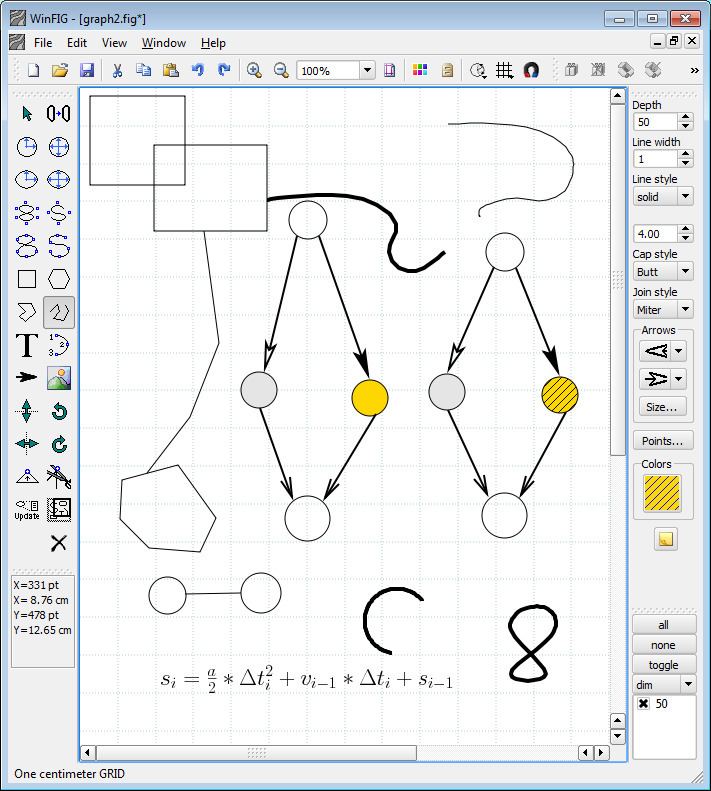Developer(s) Andreas Schmidt | ||
 | ||
Stable release 6.1 / April 24, 2016 (2016-04-24) Written in C++ using Qt (software) Operating system | ||
WinFIG is a proprietary shareware vector graphics editor application. The file format and rendering are as close to Xfig as possible, but the program takes advantage of Windows features like clipboard, printer preview, multiple documents etc.
Contents
As of 2011, WinFIG is under active development, with new features being added regularly.
History
The first release was in March 2003 and based on the Amiga program AmiFIG by the same author, which is also an Xfig compatible vector drawing application. WinFIG was not created by porting the Xfig source code to Windows. It is an independent implementation.
Starting with release 4.0 WinFIG was ported from MFC to the Qt toolkit as the application framework and thereby enabling the first release of a Linux version.
Interface and usability
WinFIG is designed to provide a clear, efficient and convenient graphical user interface. It allows working on multiple documents using an MDI user interface and provides unlimited undo and redo of actions.
Object creation
The basic types of objects in WinFIG are:
Objects can have several attributes, which depend on the object type:
Object manipulation
Exports
WinFIG can export into various formats:
